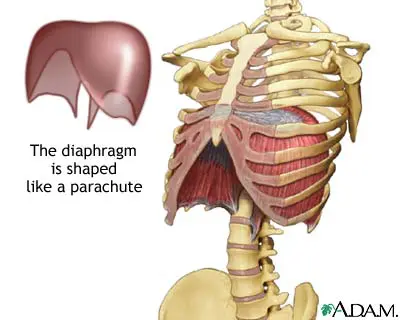
Sitting, standing, or lying on your back this exercise works the primary respiration muscle of the spine. This muscle also acts as a core stabilizer and is important for proper oxygenation of the brain.
Many scoliotic patients are poor diaphragm breathers and instead utilize their accessory breathing muscles this can result in pain and irritation as well as decreased concentration and poor mood.
To perform the exercise follow these simple steps.
In the beginning, practice this procedure for 5-10 minutes, 3-4 times a day. You can gradually increase the length of your exercises period and perhaps the effort required by placing a book on the abdomen.
After you feel comfortable with this procedure, practice while sitting in a chair or while standing.
Procedure
- Lay on your back in a bed with your knees bent.
- Place one of your hands on your abdomen.
- Place your other hand or your upper chest.
- As you inhale through your nose, make your stomach move out and keep your upper chest as still as possible.
- As you exhale through pursed lips, let your stomach fall inward. Your hand on the upper chest must remain as still as possible during the entire procedure.

